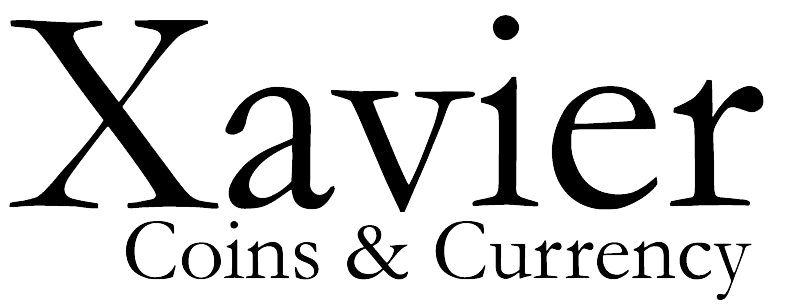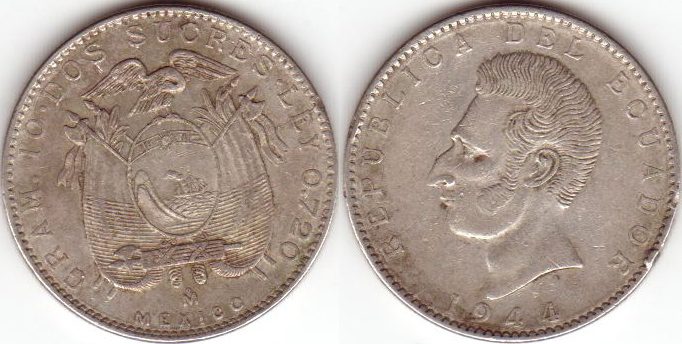A Four Reales coin was a half of a Spanish Milled Dollar, essentially a half dollar. The major reason why few U.S. quarters were minted before the 1830s is that Spanish Two Reales coins widely circulated all over the United States, Mexico, Central America, South America, the West Indies and the Orient. Spanish Two Reales coins were the quarter-dollars (1/4 crowns) of the world.
Silver Content
It is curious that the early silver coins of Ecuador were specified to be two-thirds (66.67) silver rather than at least seven-eighths. During the last 750 years, it has been unusual for silver coins to be less than three-fourths (75%) silver.
The word “fineness†refers to the precious metal content of a coin on a scale of one to one thousand, which is noted in a manner similar to the way that baseball batting averages are written. A coin that is seven-eighths (87.5%) silver, with the remainder being base metals, is 0.875 fine, though the period and initial zero are often omitted, ‘875 fine’.
The intrinsic value of a coin usually refers to the market value of the silver or gold in the coin, if (hypothetically) the silver or gold were removed and properly assayed. If the intrinsic value of a coin is much higher than its face value, then there is a motive to melt the coin or sell it to a firm that refines metals.
Type Coins
From the early 1830s to the early 1860s, collectible silver coins of the following denominations were struck at various times, all at the Quito Mint: Quarter-Real, Half-Real, One Real, Two Reales, and Four Reales. A Quarter-Real is 1/32 of an Eight Reales coin, and a Half-Real is 1/16. Ecuadorian Eight Reales and Five Francos coins require a separate discussion.
Regardless of weights, standards and purposes, Ecuadorian silver coins are appealing and fun to collect. It is not difficult to acquire type coins and representatives of a majority of dates. Early Ecuadorian coins cost less than analogous U.S. coins of similar rarity and quality.
Two Reales Coins for Beginners
The first three types of Ecuadorian Two Reales coins may be practically collected ‘by date’ without spending a great deal of money. The five design types are:
- ‘Ecuador & Colombia’ (1833-36)
- ‘Republic of Ecuador’ on Reverse (1836-41)
- ‘Republic of Ecuador’ on Obverse (1837-38)
- Capped Bust (1847-52, ’57, ’62)
- Liberty Head (1862)
As for the first type of Two Reales coins, a fair question is why the legend names both Ecuador and Colombia, as Ecuador had seceded from Gran Colombia in 1830? Perhaps the idea was for Ecuadorian Two Reales coins to trade at par with Colombian Two Reales coins within both societies. The Two Reales coins stuck in Bogotá, Colombia, in 1819 and 1820 are of the same 667 silver fineness (2/3), but are a little lighter in gross weight. Later Two Reales issues in Colombia, however, are of approximately the same weight as the Ecuadorian Two Reales of 1833 to 1835.
Coins that are two-thirds silver often tone shades of deep green, which blend well with gray colors. The just-mentioned 1835 might plausibly have appealing natural toning, though this is a characteristic that cannot be discerned from pictures. While early Ecuadorian coins will tend to have understandable imperfections, it is helpful to think about degrees of originality, and to understand the colors that tend to come about on coins of particular issues.
For those who continue after acquiring some Two Reales coins, building a somewhat complete type set of all denominations or a comprehensive collection of coins of the time period are practical options. It is not too difficult to assemble ‘mostly complete’ sets of Ecuadorian coins.


Recent Comments